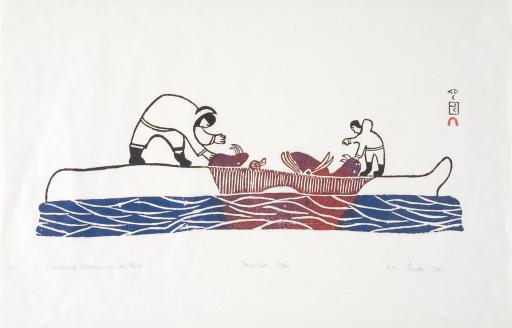Butchering Walrus on Ice Floe, Pauta Saila
Artwork Overview
Butchering Walrus on Ice Floe,
1967
Where object was made: Cape Dorset Commune, Nunavut, Canada
Material/technique: relief print (stone cut)
Dimensions:
Sheet/Paper Dimensions (Height x Width): 389 x 595 mm
Sheet/Paper Dimensions (Height x Width): 15 5/16 x 23 7/16 in
Mat Dimensions (Height x Width): 20 x 25 in
Sheet/Paper Dimensions (Height x Width): 389 x 595 mm
Sheet/Paper Dimensions (Height x Width): 15 5/16 x 23 7/16 in
Mat Dimensions (Height x Width): 20 x 25 in
Credit line: Gift of Robert and Marion Mengel
Accession number: 2007.0581
Not on display
If you wish to reproduce this image, please submit an image request




